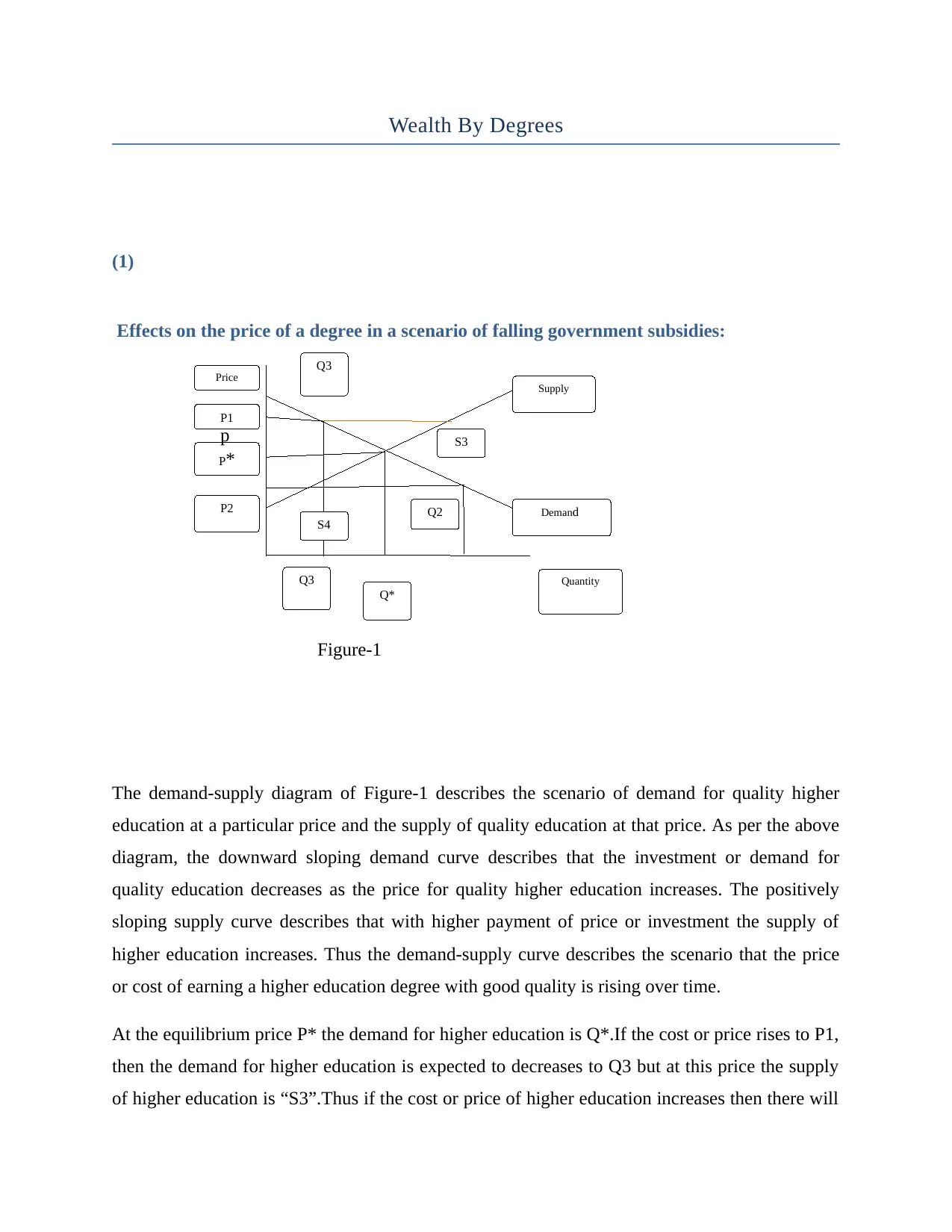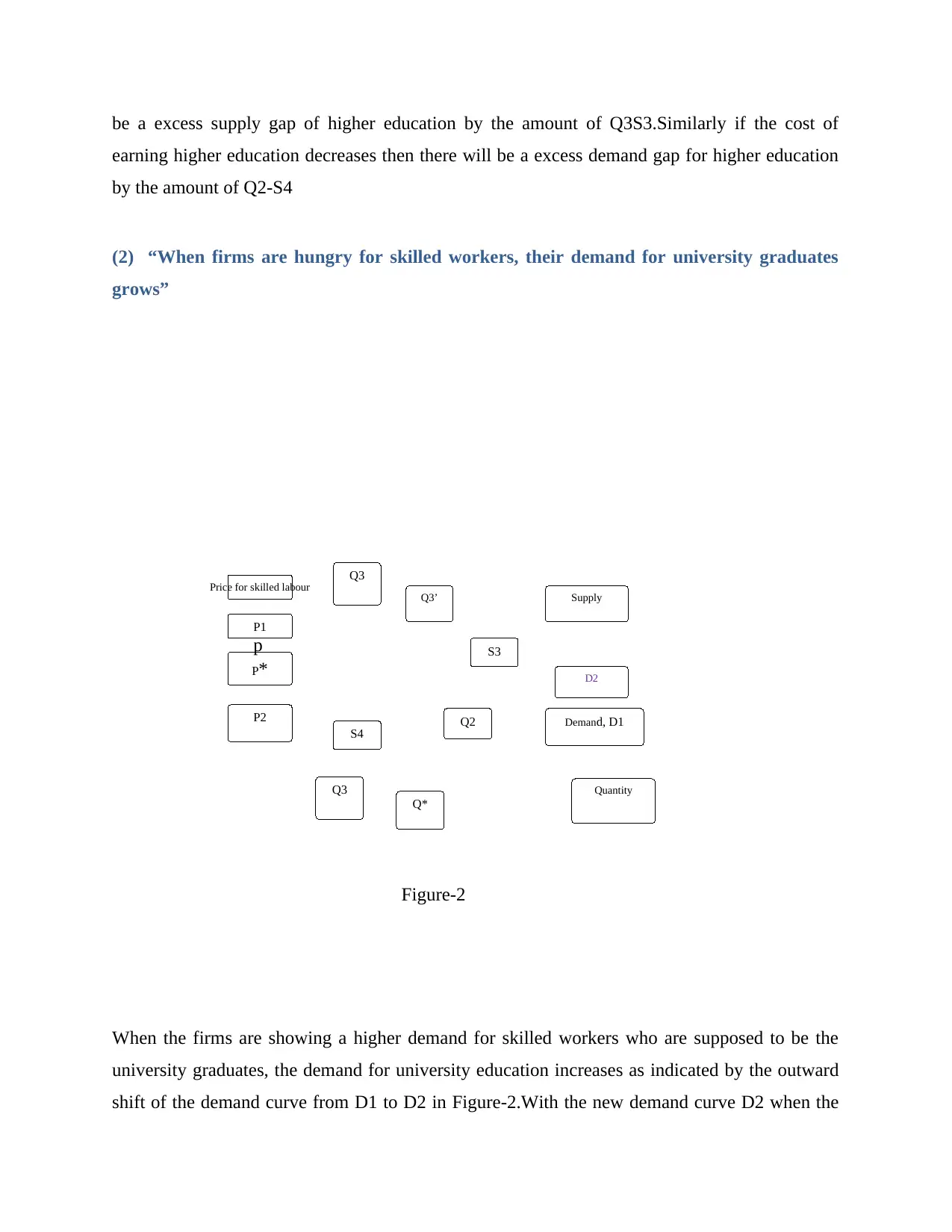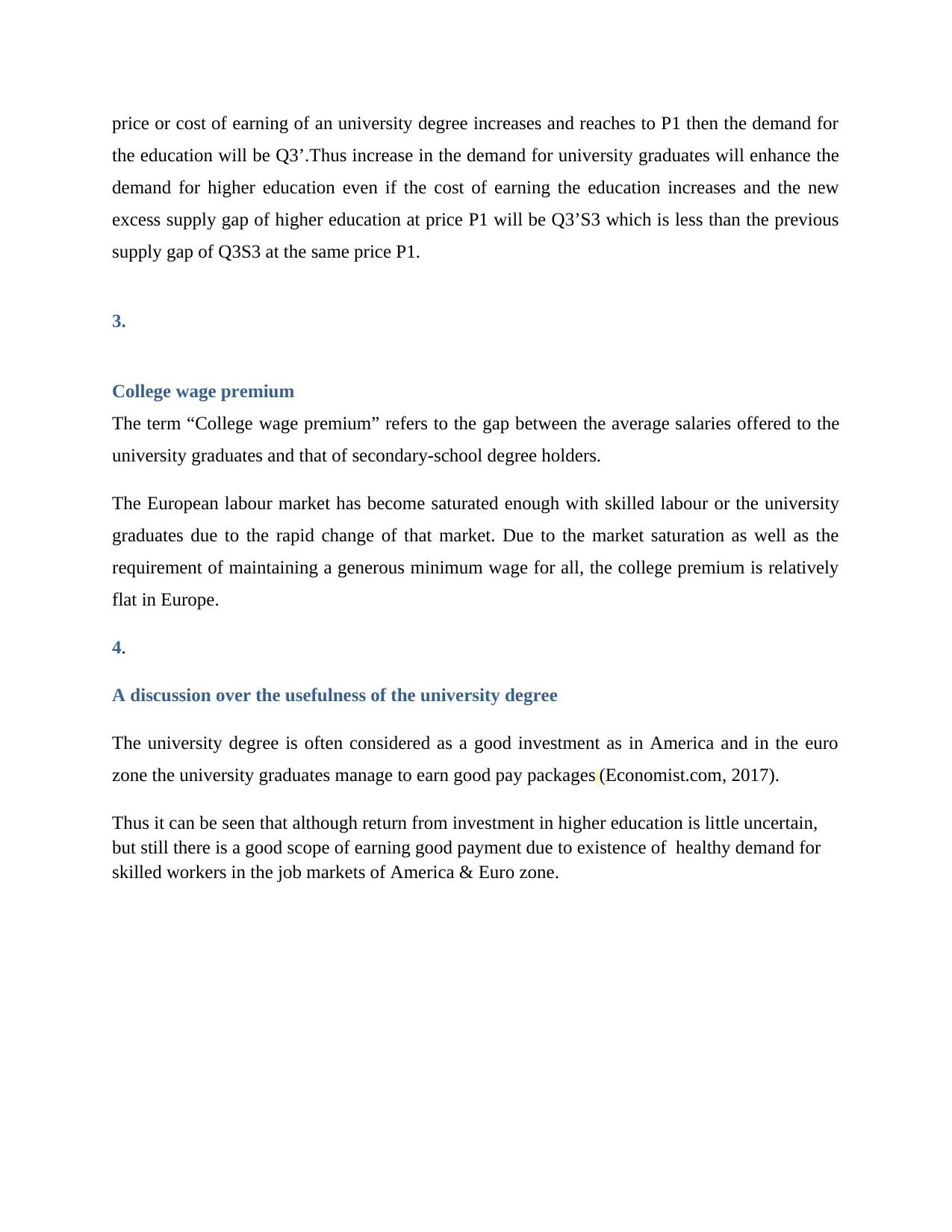Economics of Higher Education: Wealth by Degrees Report
VerifiedAdded on 2020/04/07
|4
|611
|189
Report
AI Summary
This report analyzes the economics of higher education, focusing on the impact of supply and demand on degree prices, particularly in scenarios of falling government subsidies. The report explores how increased demand for skilled workers influences the market for university graduates and the subsequent effects on the demand for higher education. It also examines the concept of the “College Wage Premium,” discussing the salary gap between university graduates and secondary-school degree holders within the context of saturated labor markets and minimum wage regulations. The analysis considers the financial returns associated with a university degree, referencing the job markets of America and the Eurozone, and highlights the scope of earning good payment due to healthy demand for skilled workers.
1 out of 4











![[object Object]](/_next/static/media/star-bottom.7253800d.svg)